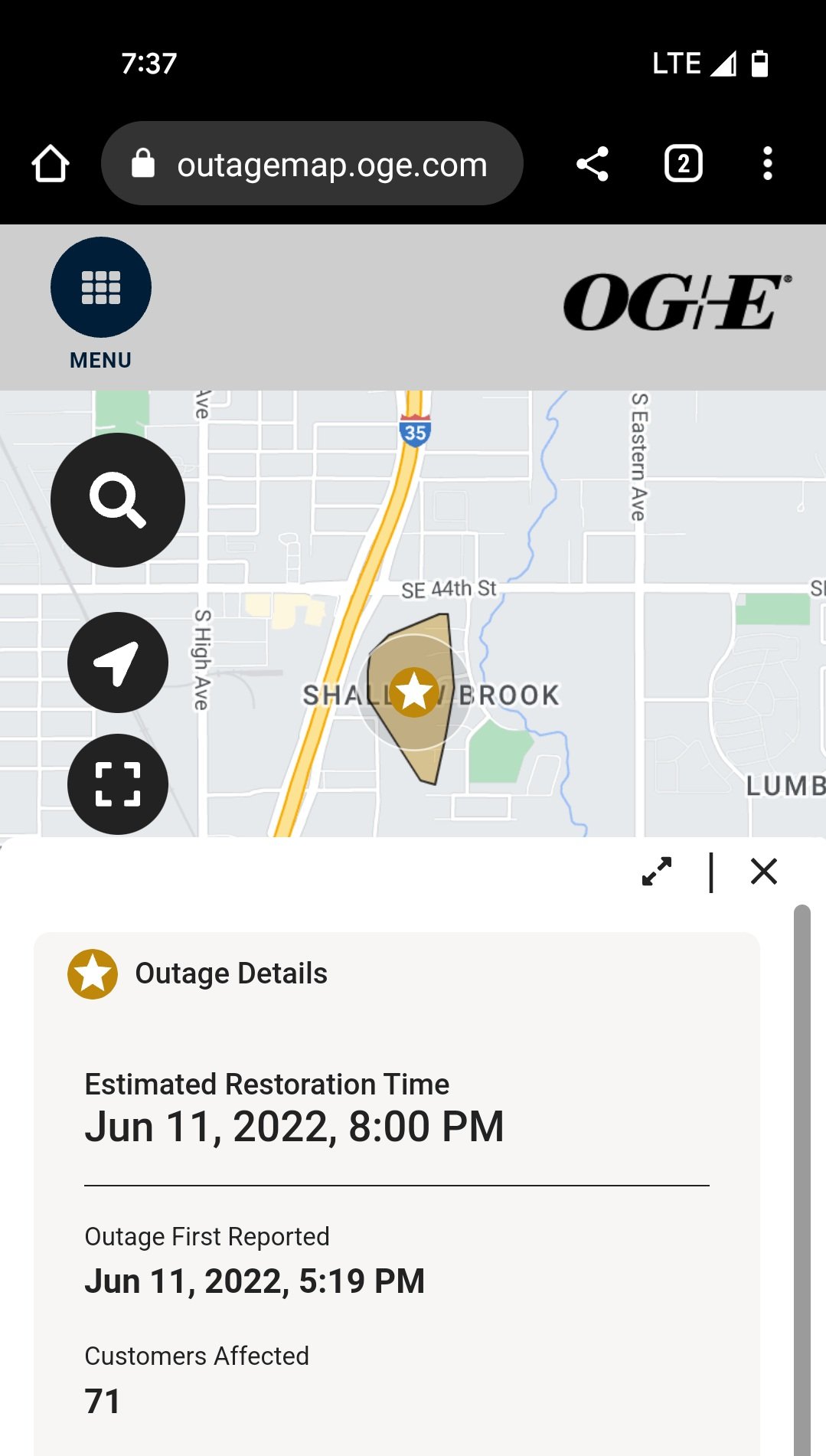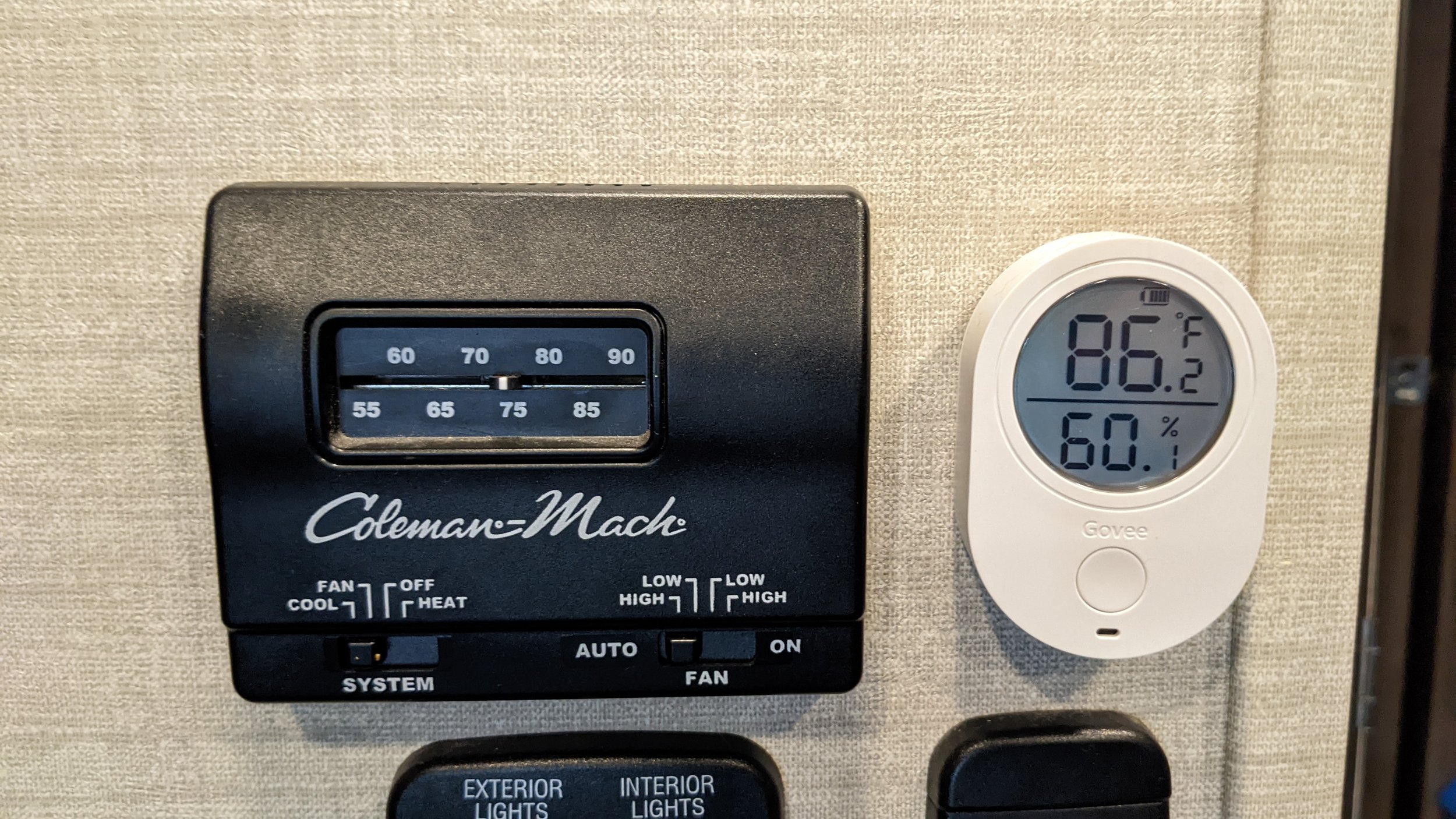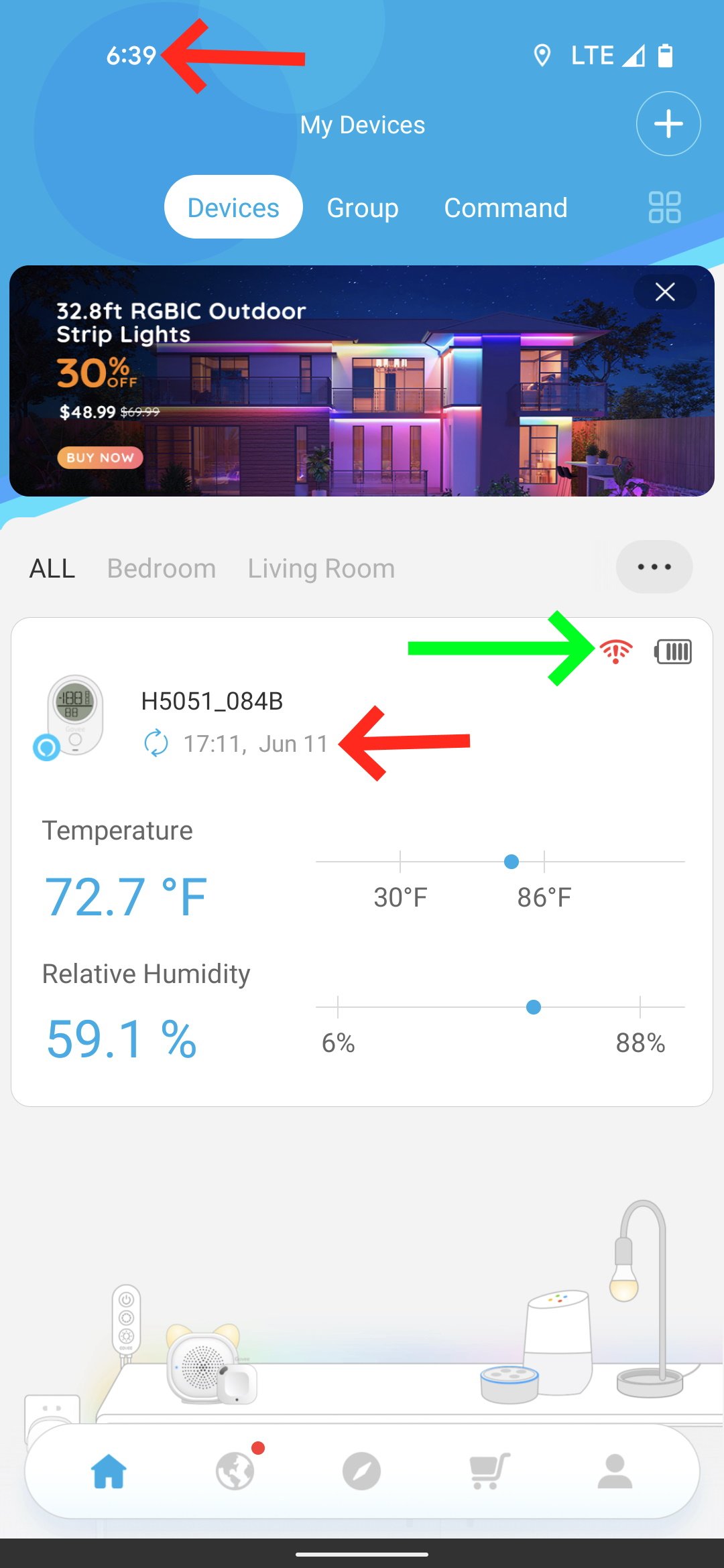How We Monitor the Temperature in our RV to Protect Our Dogs from Excessive Heat
DISCLAIMER: THIS IS NOT TECHNICAL ADVICE. WE ARE SIMPLY SHARING SOME OF OUR EXPERIENCES ABOUT THE PET MONITORING DEVICES WE HAVE OWNED. DO YOUR OWN RESEARCH AND CONSULT WITH PROFESSIONALS.
Our Story
In June 2022, we were staying at the Roadrunner RV park in Oklahoma City. While we were brewery-hopping one VERY HOT afternoon, we got the call that we hoped would never happen: the power went out at the RV park, and our dogs were in danger because of excessive heat. We rushed back to the campground, which was — luckily — only about 20 minutes away. We discovered that in less than an hour, the temperature in the RV had risen about 10 degrees (up to ~86°F). The dogs the dogs were okay though. The power wasn’t restored until over three hours later so it could have been much worse. We had a WiFi-based temperature monitoring system (more on that below) so we never got an alert. Naturally, that experience made us take another look at the temperature monitoring devices to make sure that we were keeping our dogs safe.
Here's what we found:
There are two main types of RV pet temperature monitors: those operating on WiFi (which we owned) and those using a cellular network (which we ended up buying).
WiFi Pet Temperature Monitors
A WiFi pet temperature monitor connects to the internet via WiFi to send alerts and relay information. In 2020, when we first started RVing (mostly for vacations), we purchased the Govee WiFi Thermometer Hygrometer H5051. It’s a great device. If the temperature or humidity exceeds a preset limit, then we get a notification to our phone. We can also check the current temperature and humidity on the device’s display (which we mounted to the wall near the thermostat) or using the Govee Mobile app. The device is quite handy for getting real time data back at the RV when we are out and about and want to make sure the dogs are okay.
The Govee – like all WiFi-based devices -- needs a reliable internet connection to work. The device could use either (1) the RV park’s WiFi, (2) a standalone internet router, or (3) a mobile hot spot. Each of those internet sources has its own drawbacks.
*RV Park WiFi.
While the RV park’s internet is likely free, the connection is also probably spotty and inconsistent. Moreover, if an RV park’s power goes out, then the RV park’s WiFi will likely be out as well. Lastly, it is a little cumbersome to have to reprogram the temperature monitor at each campground to use the park’s WiFi.
*Standalone Internet Router.
Even if the RV owner has a standalone internet router, those devices are expensive — costing hundreds, if not thousands, of dollars. Moreover, the router itself needs to be powered somehow. Thus, an electrical issue that results in a loss of power to the router will corresponding clause a loss of function to the Govee.
*Mobile Hot Spot.
A battery-powered mobile hotspot/jetpack is probably the best way to provide a WiFi pet temperature monitor with a consistent internet signal. That is an added montly expense (especially if for someone who uses their RV only a few weeks out of the year), and the cost of mobile hotspot plans varies widely.
When we bought the Govee in 2020, we configured it so that it would obtain internet from our standalone internet router, a Pepwave MAX Transit PrimeCare Router. For the Pepwave to function, it needs to be powered by either a 12V power source or a 110V outlet using the Pepwave’s A/C adaptor. When we connected the Pepwave to our 12V system, we found that it quickly drained our chassis battery via the cigarette lighter port — probably because it is constantly collecting data. Thus, we opted to connect the Pepwave to a 110V outlet since we were primarily using it when we were at a campground that had inadquate WiFi. We were also in the habit of keeping our inverter off unless we were boondocking (and then only turning the inverter when we really needed it). Thus, when the power went out at the RV park, the Pepwave lost power as well. The GoVee no longer had its WiFi source and we did not get a notification that something was wrong. When the campground notified us of its power outage, we could see that the Govee had last obtained temperature/humidity data about an hour before.
Had the Pepwave been directly connected to a 12V power source OR had our inverter been on, the internet likely would have kept functioning for awhile and the Govee would have ultimately sent us an alert. Of course, if there was a major issue with the RV’s electrical system (like the inverter stopped working), then we still would have had a problem.
Lesson learned.
Cellular Pet Temperature Monitors
A cellular pet temperature monitor comes with its own cellular data subcription plan. Although these are generally more reliable than a WiFi connection, these types of monitors are typically more expensive to maintain because they come with subscription fees to maintain the mobile cellular service.
After our scare in Oklahoma City, we purchased the MarCELL PRO Cellular Monitoring System, which works on either AT&T or Verizon. Our data plan is $14.95 per month (Verizon), and that is cheaper than any mobile hotspot plan that we could get for the GoVee. The device sends us an altert if there’s a power outage or our predetermined temperature or humidity levels are exceeded. We can choose to get an alert via text message, phone call and/or, email. The MarCELL checks the conditions very close to real-time as well.
The MarCELL app contains an abundance of data too. Historical data is uploaded to the cloud every 8 hours so we can view it online. We get a few free “instant updates” each month, but after those are used, we have to pay a little extra. And I literally mean just “little” extra — each update averages about 25 cents.
The MarCELL is powered by an AC current, but will function when the power is out for up to 48 hours because of a rechargeable back-up battery.
CONCLUDING THOUGHTS
Our dogs are the most important thing we have in our RV. The Govee is a good option to monitor the temperature of the RV, especially for part-timers who don’t want to pay a monthly fee. For full-timers like us, we think that the more expensive cellular systems are worth it.
Because we already owned the GoVee and it costs nothing to operate it, we still use it in addition to the MarCELL. We did some further research on our particular RV and its inverter, and now feel comfortable just keeping the inverter on all of the time so the Govee should function as long as the inverter is working — even if the power goes out. Nonetheless, we like the redundancy of having both a WiFi pet monitoring system and a cellular based system.
Keep in mind that neither system works if our phones are not able to get an alert. We often like exploring remote areas where cell service or WiFi is non-existent, including parts of many national parks. In such a case, we make it a habit to check the GoVee as soon as we get to a part of the park where we can utilize the mobile app. In some cases, we can double check that data by using one of the “instant updates” from the MarCELL.
There are several devices similar to the Govee and the MarCELL on the market. We aren’t techy experts on the latest and greatest so be sure and check out what is on the market when you get ready to protect your pets. Moreover, it’s important to understand how each device works, how it is powered, and how that fits with your RV habits and lifestyle. Hopefully you will have learned from some of our mistakes.
PS: What About Other Doggie Devices?
There are a few other “doggie devices” that we use regularly in the RV.
*Security Cameras
We decided to use the Reolink security cameras that we previously used in our sticks-and-bricks in the RV. Much like the Govee, we can watch and even talk to the dogs using the Reolink mobile app — as long as there is a good WiFi signal at the RV. One of our dogs will sometimes exhibit really bad separation anxiety, and it is nice to be able to check on him to see if he is panting, pacing, or stressed.
*White Noise Machine
We also have a white noise machine to help block the campground noises and reduce the amout of barking.
*Ultrasonic Sound Generator
We occasionally use an ultrasonic device to help the dogs stop barking when we are away from the RV. Dogs tend to get used to the sound and then stop responding to it. Thus, we’ve learned that it is best to use the ultrasonic device every now and then and not every time we leave the RV.
Safe travels to you and your four-legged friends!
DISCLAIMERS: PLEASE DO YOUR OWN RESEARCH. WE ARE NOT RESPONSIBLE FOR YOUR RIG! We are NOT affiliated with any of these manufacturers and just want to share our experiences about the products and project in this blog. We do get a very small commission at no cost to you if you use one of the Amazon Links (a/k/a beer money).











